Our Notable Medical Malpractice Verdicts & Settlements
With a reputation for handling numerous notable injury lawsuits, the Jacob D. Fuchsberg Law Firm offers an insightful look into significant cases. Explore some details to understand comprehensive legal mastery of our attorneys.
.svg)
View All Success Stories
.svg)
Top Gall Bladder Medical Malpractice Lawyers

Some of the most common types of surgical procedures performed in hospitals today involve the gastrointestinal system and the gallbladder. In some cases, patients are injured because of medical negligence that could have been prevented. Surgeons and hospitals can be held accountable when malpractice occurs on their watch. That is where our firm can help.
If you or a loved one suffered an injury as a result of negligent colorectal or gallbladder surgery, talk to the Jacob Fuchsberg Law Firm. Our attorneys have been representing injured people and their families for decades. We understand the pain and difficulty that result from medical negligence, and we know how to obtain maximum compensation for our clients’ losses, including pain and suffering, income loss, and wrongful death.
Are You Suffering from Laparoscopic Gallbladder Surgery Malpractice?
When you have your gallbladder removed through laparoscopic cholecystectomy surgery instead of open surgery, a surgeon makes a small cut in your abdomen and inserts a tiny camera. The insertion of the camera enables the surgeon to see your gallbladder and other nearby organs without having to cut into them.
The ability to see this area is essential because the bile ducts of the gallbladder are extremely small and a surgeon could easily accidentally cut them without the vantage point of the camera. The bile ducts are also extremely close together and can hold a great deal of bacteria. It the surgeon cuts them accidentally, it could cause a leak and infection that could threaten your life. This is just one of several possible gallbladder surgery complications you could experience resulting in personal injury.
Sepsis and a gallbladder abscess are some other possible gallbladder removal complications besides accidentally cutting the bile ducts and common bile duct leakage causing an infection known as cholangitis.
You may feel that you have an obvious case of medical malpractice because you now suffer a complication like severe abdominal pain from gallbladder surgery. You may even suffer from more than one. Even so, you must prove the surgeon’s negligence in court to collect any damages. This includes demonstrating how the surgeon violated the accepted standard of care for gallbladder surgery and that his or her negligent actions are the direct cause of the injuries that continue to plague you. This can be exceptionally challenging unless you have retained an attorney experienced with gallbladder malpractice settlements.
The first laparoscopic gallbladder surgery in the United States took place in 1987 and became the preferred method of performing this common surgery by 1992. Prior to the advent of this technology, patients who needed their gallbladder removed had to undergo an invasive surgical procedure and spend several days in the hospital. Recovery times were much longer as well.
Although the technology changed gallbladder removal surgery for the better, serious mistakes can still occur. You have the legal right to contact a medical malpractice attorney if you are suffering the consequences of botched gallbladder surgery.
Contact a Gallbladder Malpractice Lawyer Today
Contact the Jacob Fuchsberg Law Firm to discuss your concerns in confidence. Our New York City personal injury surgical error lawyers represent injured clients on a contingency fee basis, which means you will not pay legal fees unless we recover compensation for you and your family. Serving New York State, Connecticut, and New Jersey 212-869-3500.
Contact UsGallbladder Surgery Complications
Laparoscopic gallbladder surgery is normally a simple procedure that takes less than one hour to complete. It no longer requires a hospital stay and patients routinely have it performed on an outpatient basis. While this is good news for patients, it also introduces the problem of inexperienced surgeons rushing through a procedure that they assume is routine. Something as persistent as a solution from constant pain from gallstones can turn into a nightmare for the patient if the laparoscopic surgery goes wrong.
For example, nicking or cutting the bile ducts of the gallbladder is a common type of medical malpractice. Surgeons could avoid this entirely if they had a better understanding of the anatomy of the body. The best way to avoid this error is by first completing a circumferential dissection around the patient’s gallbladder. This step allows the surgeon to easily see and identify the arteries, ducts, and structures of the gallbladder.
It is also imperative that the surgeon knows and follows the proper surgical technique. After preparing the patient and identifying each part of the gallbladder, the surgeon should follow these steps in the proper order:
- Elevate the liver by using an atraumatic grasper to lift the edge.
- If the surgeon does not clearly see the gallbladder, he or she should dissect it carefully underneath the liver
- If the surgeon notices that the gallbladder has become inflamed, he or she needs to decompress it before lifting it with surgical tools. After exposing the fundus of the gallbladder, which is the end opposite of the cystic duct connection, the surgeon needs to use a grasper and push the fundus over the liver. The surgeon should move the fundus to the upper right of the abdominal cavity to create additional space between the colon and the liver. This is the location of the pertinent arteries and bile ducts.
- For the fourth step, the surgeon must visualize the Calot’s Triangle of the gallbladder and the CVS, which stands for Critical View of Safety. He or she must pull the gallbladder in the proper direction to expose both of these. If this does not occur, it increases the risk of the surgeon misidentifying parts of the Calot’s Triangle and injuring the hepatic arteries or ducts.
- Next, the surgeon needs to finish the circumferential dissection by cutting directly adjacent to the gallbladder and moving all adhesion to the gallbladder’s neck or base.
- At this point, the surgeon must correctly identify the cystic duct by locating the neck where it connects with the gallbladder. Unfortunately, misidentifying this part is a common type of gallbladder surgery malpractice. The surgeon must move the grasper closer to the gallbladder’s neck, which is opposite of its fundus, in each direction so the surgeon can accurately identify the cystic duct junction. He or she should make additional small incisions if this part of the gallbladder is not clearly visible to avoid making a serious error.
- The next step involves clipping and cutting the dissect cystic artery. The surgeon should reposition the grasper to grab the gallbladder as close as possible to the cystic duct and pull it laterally and anterior to make the cystic artery visible. The surgeon then dissects, cuts, and clips the artery with two clips at its stump. Misidentification of the cystic artery can result in the surgeon cutting blood supply to the hepatic artery that feeds the liver.
- Now the surgeon needs to manipulate the gallbladder away from its bed once the surgical clips are firmly in place. The tools he or she needs to use at this point include cautery scissors, hook cautery or laser. Fortunately, gallbladder malpractice claims originating from this stage of the surgery are rare.
- The last step is to remove the gallbladder. Before the surgeon can do this, he or she must check to make sure that no leaking or bleeding is taking place within the ducts or bed. If everything looks clear, the surgeon now lifts the gallbladder from the abdomen and sutures the surgical site. Gallbladder complications are rare at this point as well.
These steps outline the general procedures that a surgeon should take with a routine laparoscopic gallbladder surgery. The most crucial things that must take place to avoid a case of malpractice include properly identifying the arteries and ducts before doing any cutting. When a surgeon does make this type of error, it often is not obvious until a few days later when the patient returns to the hospital with severe pain, infection, or other complications from a botched gallbladder surgery. If this has happened to you, you may be entitled to compensation for medical expenses, lost wages, pain and suffering, and more.
Were You or a Loved One Injured by a Colorectal or Gallbladder Surgical Error?
Colorectal and gallbladder (cholecystectomy) surgeries can go awry when a surgeon fails to take the time to perform a procedure properly, or when a physician does not respond to a problem caused by the surgery itself (known as an iatrogenic injury).
At the Jacob Fuchsberg Law Firm, based in Manhattan, our attorneys have extensive experience with surgical malpractice cases involving:
- The array of septic issues and infections that can result from surgical interventions
- A physician’s failure to diagnose a gastroenterological problem in a timely manner, which can lead to an emergency colostomy
- A surgeon who cut the wrong bile duct, which can lead to a patient having to undergo a rerouting of the intestinal tract also known as a Roux-en-Y hepaticojejunostomy
- Erroneous colon cancer surgery and diverticular surgery

.svg)


.svg)
.svg)



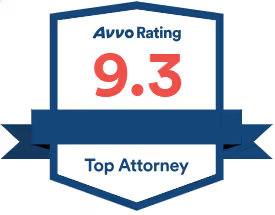

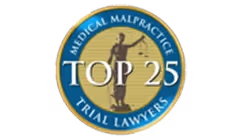

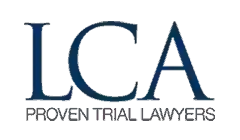
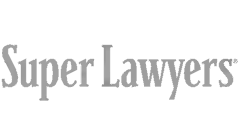

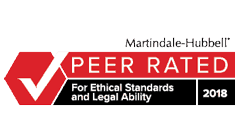
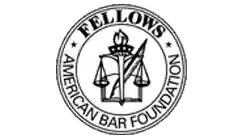
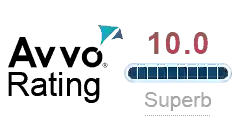
.svg)

.svg)
.svg)




.avif)


